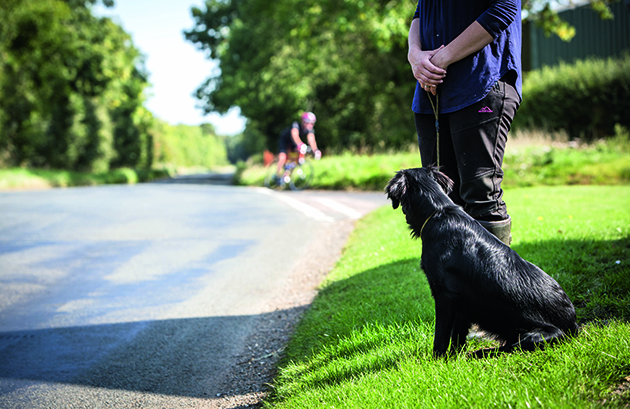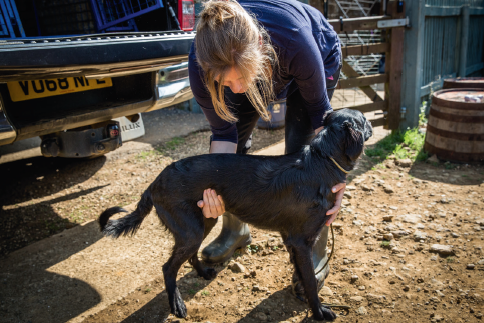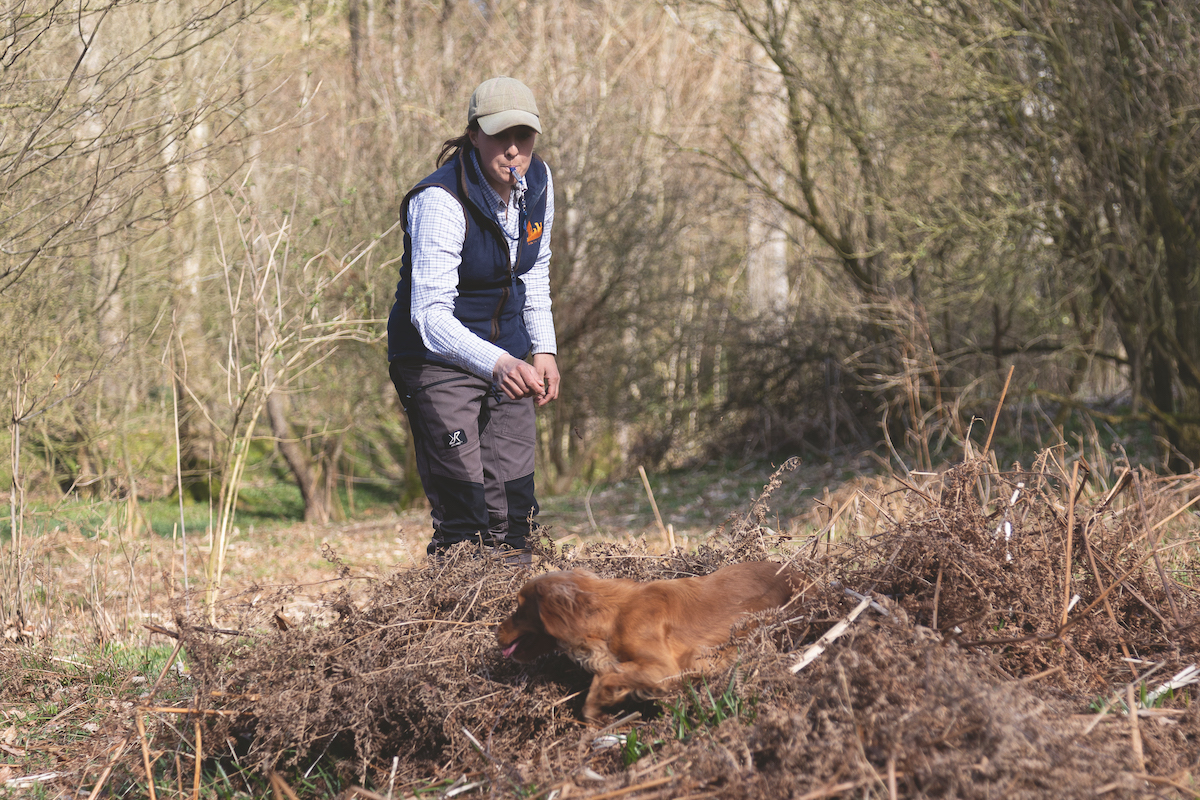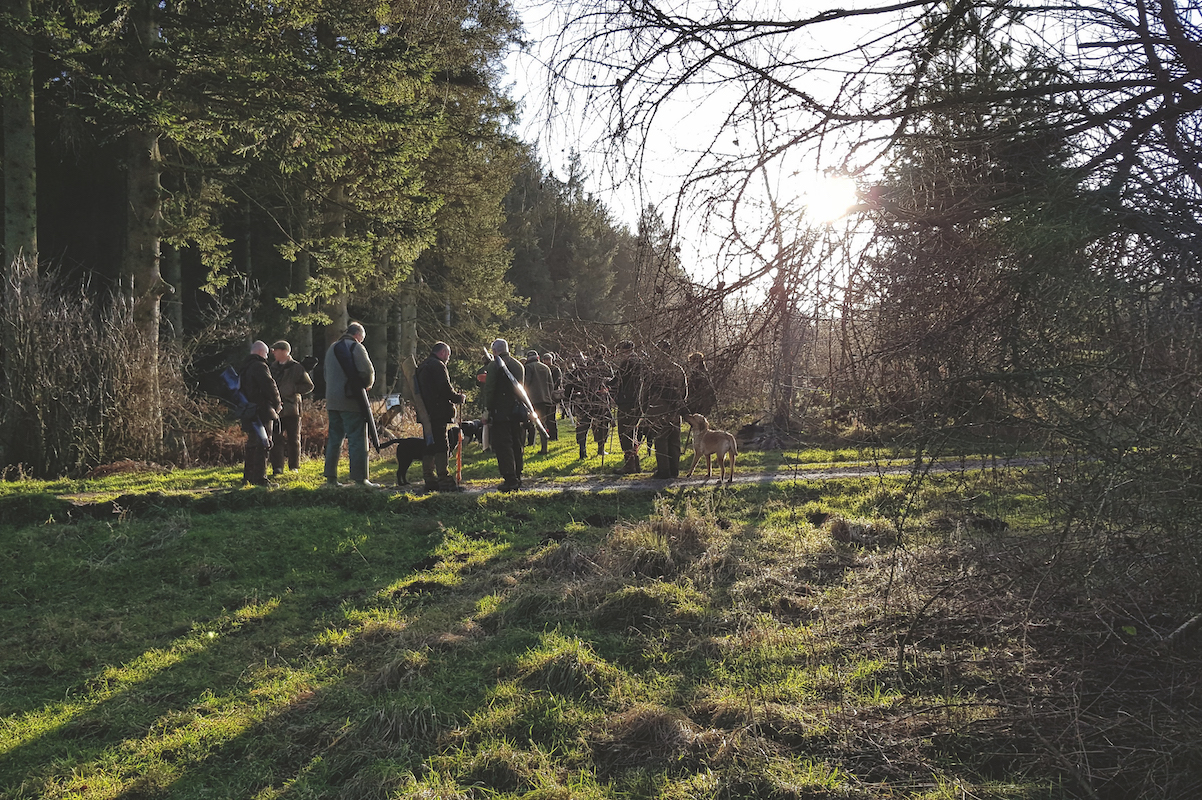Keeping a young gundog steady on a shoot day
For youngsters, the excitement and distractions of a shoot day can make all they've learned go out of the window, warns Ellena Swift.

A suitable shooting companion should be many things. They should be hard hunting, patient on peg, calm to heel and have reliable recall. These are only a few of the key skills and attributes.
The basics in training will pay dividends in the long run and are so often overlooked. The ability simply to heel consistently and reliably on a shoot is one of the most common obvious skills lacking. A vast majority will opt for using a lead rather than risk the embarrassment of the dog being out of control.
This is a waste because, though slightly mundane, having the basics instilled makes for a greatly improved and more enjoyable experience with any gundog. One of the most common things I hear as a trainer — in all disciplines not only gundogs — is “my dog is really good at heel/sit/recall until there is a distraction”.
The basics are essentially useless, whatever stage the dog is at in its training, because unless there are no birds, dogs, people, shooting and so on, it cannot heel. Many manage to master the basics at home but then, when they go anywhere else, the wheels come off . It is easy to say “Oh, the dog is just overexcited” and that is in part correct. But why? Why does it seem some dogs can cope with the added excitement and others simply cannot and remain out of control.
Association
To understand this, it is important to understand a dog’s decision-making process. Dogs learn by association as opposed to memory. So when they learn something at home, it does not mean they will know how to do that thing anywhere else but where it has been trained. They will associate that location with behaving a certain way.
When they move to a more exciting scenario, with several distractions, in that moment the novice dog will decide what holds the greater reward — chasing the other dog or heeling for some praise and/or treats. Obviously, the majority of young dogs would choose the former — unless they have been properly trained around that stimulus. The handler then fights to get the dog under control but it is making the wrong associations with a shooting environment.
The bottom line is the dog has never been trained around those exact stimuli, or anything similar, and so is totally overwhelmed and unable to cope. The basics have been rushed or skipped altogether and the owner is now paying the price.

Lizzie must first get used to waiting to be lifted out of the car without trying to barge past Ellena
Lizzie: Distraction training
So how do we get our young dog reliably displaying the behaviour we want on a shoot day and make it so they are able to cope with the excitement? Lizzie, the lovely little flatcoat I am training, is making great progress on her basic sit, heel and recall at home. We have trained around controlled dogs at home but obviously haven’t been anywhere else.
Of course, we are not going to take her anywhere near a shoot at this stage and age because it would quickly overwhelm and potentially ruin her. So we are going to start with a simple walk in public. One of the things dogs have to cope with on a shoot is not only seeing dogs but watching the bad ones as well as the good ones. There will inevitably be some dogs that are not under control and any dog needs to be able to cope with that.
A park or public place is normally a good place to start. Aim to start small, somewhere it is not too busy and where you might see one or two dogs. I am going to take Lizzie into our local town then into a pet shop, where the smells, people and dogs provide valuable training opportunities. I go at a time when it shouldn’t be too busy because it is her first visit. However, as a totally new environment it will provoke excitement.
I make sure when I take her I have enough time to train her and get it right. This is a pointless endeavour if you are in a rush. The aim of the exercise is to ensure the dog achieves. Success breeds success, so if something is not going right, time must be taken first to work out why and then put it right.
My first job is simply unloading Lizzie from the car. This is extremely minor in the grand scheme of things, but it is a delight if the handler can open their car up without the dog flattening them and barging past. I make sure Lizzie waits calmly for me to call and lift her out.
If she isn’t calm, I wait until she is. If I have to put her back in and repeat this, then so be it. All I am concentrating on once out of the car is the heel and focus on me. I want the lead as loose and relaxed as possible. If I have to cling on to her the whole time, she is not going to learn a great deal. I take my time and any elements she finds hard I repeat until she is doing it correctly.
The more places you can take a young dog and practise the basics, the better they will be prepared for the excitement and distractions they are going to be up against on a shoot day.
First shoot day of the season
KEEPA, as planned, has now attended his first live day’s shooting of the season. It was my first socially distanced shoot and, though very different, ran with absolute precision. We covered some bits of rough ground, different types of game cover and stubble fields. The Guns shot well, leaving us with plenty for the dogs to work on and certainly test them.
Keepa began a little lethargically, almost as if he was still expecting there to be only dummies. By this time in the year, most dogs have had enough training on canvas. As soon as the first couple of birds were shot, he started to switch on.
His first retrieve was a bird that was shot out in front and flew quite a way before towering and then dropping. We waited until we were a little closer to send. The game cover was dense and tight, making scenting difficult for the inexperienced or simply out of practice.
Being the latter, Keepa made a rather poor job of hunting the area, not properly settling and using his nose. This is a little bit to be expected on the first day.
His second was an easy retrieve that he should have been able to do with little or no input from me. He did, however, attempt to hunt again as he did the first. There is no point me leaving him to do this as he will simply continue. So I walked a little closer and used my hand and voice to slow him and get his head down. It is difficult to show emotion through a whistle, whether it is to liven a dog up or attempt to settle them. So by using my voice I could help him to understand he needed to slow down and hunt more methodically.
Not allowing him to run around overexcited, as opposed to hunting a bit wildly, meant he picked the bird and so was rewarded for listening and hunting sensibly. His next retrieve was a delayed memory. Several birds were shot at once, meaning they had to mark and remember five areas at once.
He was sent for the final bird and the furthest away. I had a good mark on it but, as it had been a while since it was shot, I was beginning to doubt myself. I sent him on the line, which he took with absolute precision. As he approached the area and I prepared to stop him in case he ran over, it was really rewarding to see him slow down and begin to lower his head. He was much more precise and methodical with this retrieve than the first two. As I went to blow the hunt whistle, he had already picked. I was thrilled to have such a smart top-class retrieve to finish on in testing cover. It is always nice, not only for the handler but also the dog, to finish a session or day on a positive note.
Rusty
Just like Keepa, I quickly realised how rusty and slow I had become at marking falling game. It is an art and I am not a natural at it. I have to work hard to focus and mark it to something on the skyline.
I need to get some practice. Keepa will need another few days on game to get back into the swing of things before entering any trials. However, I was pleased with his start and encouraged by how quickly he settled.












